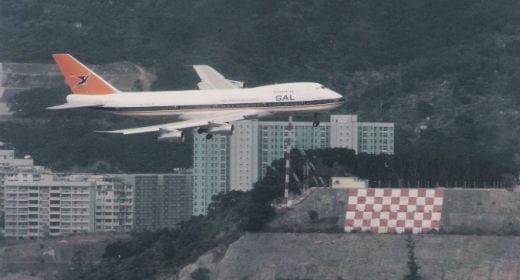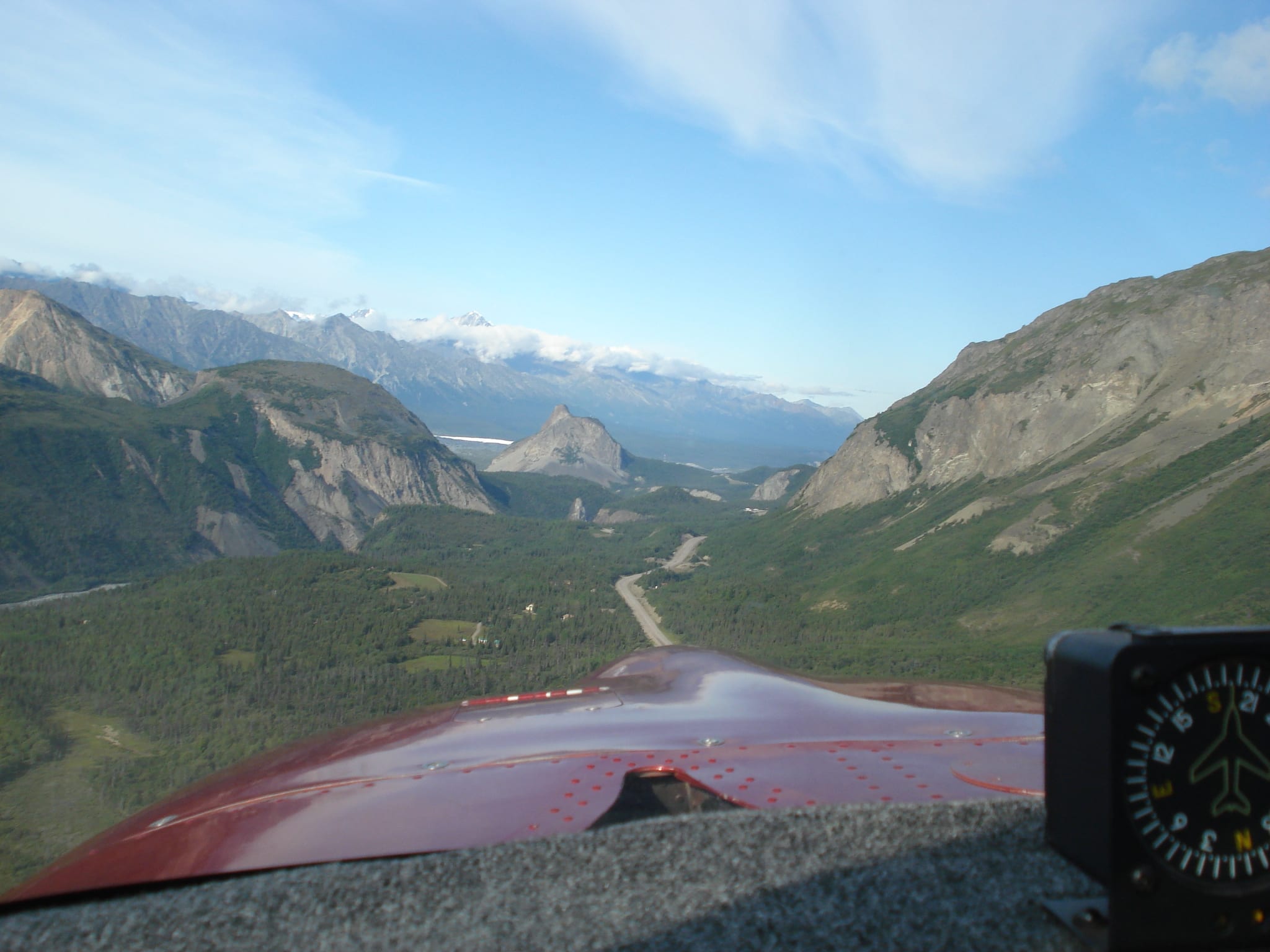
A humbling solo flight
I Can't Believe I Did ThatSo I poured the power on and hauled back on the yoke. With the lighter load, that yoke came right back and the nose of the plane pointed right up. For a split second I thought “that's strange” and before I knew it, I was pointing straight down at the ground in a left spin.

The test: when things go wrong in a DC-3
I was thereThis is no way to begin a trip and I knew it. What if I lose an engine on takeoff tonight in this crud? Nothing like the real thing to test a pilot! Every pilot will tell you there is a big difference between engine-out flying during training or a check ride, and engine-out flying for real. But how will I do if it happens tonight?

From the archives: Bob Buck gets a Boeing 707 check out
Air Facts ArchivesThis in-depth report, originally published in the September 1960 edition of Air Facts, is Bob Buck at his best. The legendary airline pilot and author takes us along as he checks out in the Boeing 707, the defining airplane of the jet age. From practicing maneuvers to taking a check ride and flying to Europe, Buck explains how the big jet flies, why it's different and how it is changing the airline business.

Double trouble: have twins suddenly turned deadly?
Dick's blogIn the course of a few days, two old piston twins, a Model B55 Baron and a Piper Navajo, crashed, killing six in each case. My main question about the recent accidents was whether or not they were related to the failure of one engine and the resulting asymmetric thrust.

My floatplane rating – not easy, but worth it
I was thereI arrived at the seaplane base bright and early to find that I was to be the only student. You wouldn’t guess it from the Orlando traffic, but it was something of an off-season, at least with regard to people looking for floatplane ratings.

To go or not to go? That is the (wrong) question
John's blogWe falsely view most aviation decisions as binary. The language of decision-making subtly reinforces this, with exhortations to "keep it simple" or "be confident." What we end up with is a hopelessly unrealistic set of answers: yes or no, black or white. We should know better. Flying is all about subtle clues, 50/50 decisions and shades of gray.

The most inherently dangerous of all flying techniques
I was thereIt’s unwise, it’s in contravention of standing FARs, and it is - without argument - the most inherently dangerous of all flying techniques. It puts crop dusting, aerobatics, and banner towing up in the bleachers. It’s far more dangerous than flying as a salmon spotter for the Alaska fishing industry. Except for herring spotting, that is, which is in a category of its own.

Not all preflights are created equal – 4 different approaches
TechniqueThe detail and depth of a preflight inspection can vary from day to day based on the type of airplane we are flying, where that airplane is parked, and even whether recent maintenance has been conducted. Let's talk about our preflight attitude or mindset for renters/flying clubs/partnerships, individual owners, Part 135 or Part 91 corporate operations, and airplanes fresh out of maintenance.

Continental drifter – why cross country flying is the best
I was thereCross-country flying in the Cavalier is among the most enjoyable and satisfying time I've spent in my life. The Cav has allowed me to range farther across this continent than I could have done with any other plane I've owned. I've learned that it's somehow important to me to explore far away places in my own plane.

The false choice between technology and flying skills
John's blogFreedom or security. Ketchup or mustard. Life is filled with supposedly difficult decisions that aren't really decisions at all. Pilots face the same false choice when it comes to technology. It's time to embrace new avionics and solid hand flying skills.

Orion begins – a father/son trip to the Space Coast
I was thereOwning an airplane pretty much obligates one to always be looking for the next chance to use it. The worst thing for an airplane (or a pilot) is to stay on the ground and never fly. Therefore when my son indicated an interest in seeing the launch of Exploration Flight Test 1, I seized the opportunity.

From the archives: to Hong Kong in a 707
Air Facts ArchivesOnce again the Air Facts archives offer a mesmerizing flying story from record-setting airline captain Bob Buck. In this article, from the March 1969 edition, Buck takes us from New York to all kinds of exotic places in his Boeing 707: Frankfurt, Athens, Tel Aviv, India and finally Hong Kong.

From the archives: Len Morgan on airline flying
Air Facts ArchivesLen Morgan was a legendary airline pilot and writer, but many readers may not know that he wrote for Air Facts before going on to Flying magazine. This article, from the December 1953 edition of Air Facts, takes us back to another era and offers a look at the life of an airline pilot during the glory days.

A double tragedy: Colgan Air Flight 3407
Dick's blogThe crash of a DHC-8-400 (Q400) on approach to Buffalo, N. Y. brought on the all-time most egregious case of smoke and flames rulemaking by the FAA. It was dictated by Congress, it makes no sense, and it will have a lasting deleterious effect on air service to smaller cities and on airline flying as a profession.

Practice makes perfect–sometimes
John's blogEveryone wants to be a better pilot. The real question is: how do we become better pilots in the most efficient way? Fortunately, the past decade has seen a boom in the science of how people learn and improve their skills. This research has much to offer pilots.

The risky moments: when decisions go bad
Dick's blogEveryone who writes about aviation safety eventually comes around to the subject of risk management. The FAA wants CFIs to teach it using checklists, which is hardly realistic. The simple truth is that risk management can be done only through a deal the pilot makes with self.

11 keys to safer instrument flights
TechniqueLet’s look at some of the things we can do to minimize the chances of hurt while instrument flying. All along the way, remember that an important part of the operation is to continually ask yourself what comes next and what comes after that, and on and on.

Connie flight from Paris to Cairo, 1951
HistoryFrom time to time, we revisit an original Air Facts article that we think would make enjoyable and worthwhile reading today. So it is with Bob Buck's “Flight to Cairo,” the legendary airline pilot's story of flying a TWA Constellation from Paris to Cairo in the days before jet engines and GPS.

Ohio to Alaska by Swift
I was thereIn this must-read article, an Air Facts reader shares his once-in-a-lifetime trip from Ohio to Alaska in his award-winning Swift. Read his day by day account, complete with stunning pictures. As the article proves, flying to Alaska is not as difficult as you might think.

Land of the midnight sun
I was thereThe most significant and defining feature of Alaska is, quite simply, its size. It’s a landscape on steroids; a wild land defying the sky to contain it in a voice that resonates with a visceral, primal power. Nowhere else in America are humans so dwarfed by the land they make noises about inhabiting.
